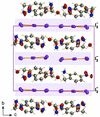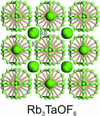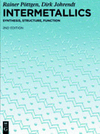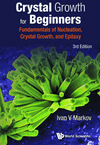issue contents
December 2019 issue

Cover illustration: Two opposed diamonds at the heart of a high-pressure diamond anvil cell (DAC) invented in 1959. The sample in the DAC can be synthesized, recrystallized, cooled, heated, studied by diffraction, spectroscopy and many other methods. It can be also seen through a microscope: the insets illustrate abrupt shape and colour changes in compressed coordination polymer CoCl2bpp [bpp = 1,3-bis(4-pyridyl)propane]. The impact of the DAC is summarized by Andrzej Katrusiak in the research perspectives article in this issue: Katrusiak [(2019). Acta Cryst. B75, 918-926].
scientific commentaries

research perspectives
 access
accessresearch papers
























 access
access













book reviews




 journal menu
journal menu

























































